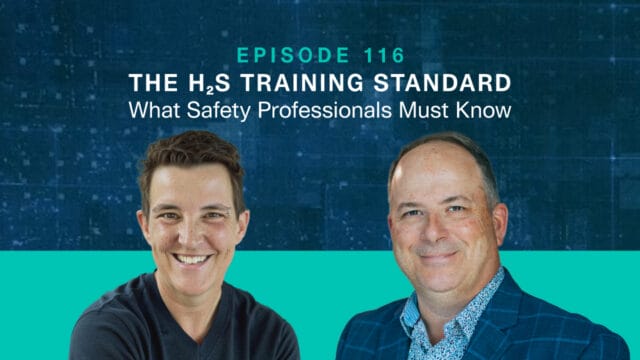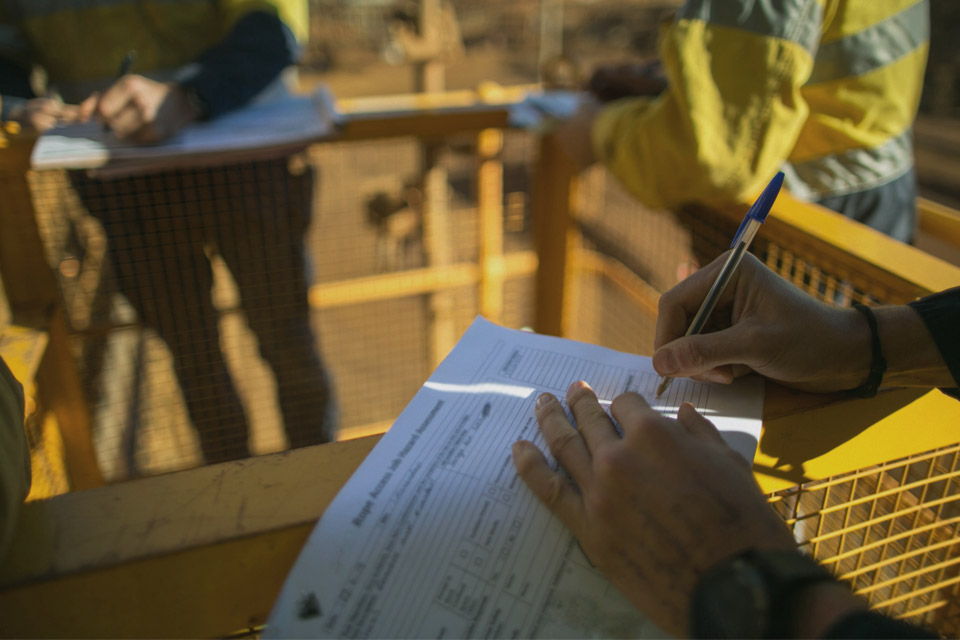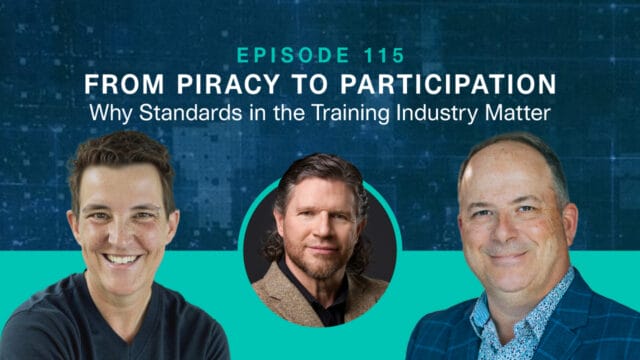An accurate onsite safety audit is critical for contractors and suppliers seeking the best possible insurance policy because underwriters rely on the information gathered during these inspections to assess risk profiles and decide the right coverage and premiums.
And while internal audits are helpful because they spot errors before external ones do (when resolving them may be far more expensive), they will not satisfy the underwriter’s requirements for qualification. As a result, contractors and suppliers must enlist a third-party expert capable of providing a comprehensive report acceptable to the underwriter.
However, they should not need to look far for these services. Instead, their compliance and risk management provider, with whom they already partner and pay for services, should conduct these assessments on the contractor’s behalf.
This article outlines seven services these expert partners should know how to provide and why they are necessary to conduct a proper safety audit.
Seven Reasons Contractors Need an Onsite Safety Audit
The solutions provider should help contractors and suppliers achieve the following goals:
1. Meeting the Underwriter’s Guidelines
Underwriters follow specific guidelines when assessing risks, and the best onsite audits help them determine if the contractor meets those requirements by:
- Facilitating accurate risk assessments. While the underwriter is ultimately responsible for assessing the risk, the provider will use the underwriter’s guidelines to evaluate the contractor or supplier’s risk profile on the underwriter’s behalf.
- Preserving process consistency. This expert partner can also use these guidelines to help support stability in the underwriting process. When solution providers verify that the contractor meets the necessary criteria, they ensure the underwriter continually evaluates the same risks.
- Confirming financial stability. Underwriters consider the financial stability of contractors when assessing risk. The third party can help underwriters evaluate the contractor’s financial standing, including revenue, assets, and liabilities.
As a result, underwriters can make more informed decisions on coverage, premium rates, and terms.
2. Receiving the Right Coverage
An accurate third-party safety audit also allows underwriters to understand a contractor’s business’s specific needs and requirements and help them customize the insurance coverage to adequately protect the contractor’s operations.
More specifically, the coverage should carry out the following:
- Ensure compliance with contractual requirements. Contractors often have contractual obligations that require specific insurance coverage. Tailored coverage allows underwriters to ensure that the contractor’s insurance policy meets the contract requirements.
- Account for evolving risks. Due to market conditions, regulatory changes, or technological advancements, business risks can change over time. Tailored coverage enables underwriters to stay updated with the evolving risks contractors face.
- Provide cost efficiency. Tailored coverage helps prevent over-insurance or under-insurance. Over-insurance occurs when contractors pay for coverage they do not need, leading to unnecessary expenses. Under-insurance leaves the contractor vulnerable to inadequate coverage in the event of a claim, potentially resulting in significant financial losses.
3. Paying the Correct Premium
The risk associated with a contractor’s operations plays a significant role in deciding insurance premiums. An expert onsite audit provides the third party with in-person knowledge of the contractor’s business, such as:
- Risk exposure. Underwriters must evaluate the extent of the contractor’s exposure to potential risks. Data from the expert partner allows underwriters to assess the value of the contractor’s assets, the scope of their operations, the number of employees, and the size of the projects they undertake.
- Risk Management Practices. The solutions provider can also evaluate the contractor’s risk management practices and safety measures. They should assess employee training programs, safety protocols, regulation compliance, and equipment maintenance for the underwriter’s review.
- Loss History. The safety audit also allows underwriters to review the contractor’s loss history. They can assess past claims, incidents, or accidents onsite.
4. Providing the Underwriter with Accurate Data
Onsite audits enable the partner to verify the accuracy of information provided by the contractor during the application process through:
- Gathering firsthand information. Physically visiting the contractor’s premises and seeing their operations allows the expert partner to gather direct knowledge about the contractor’s activities, equipment, and facilities and pass that information to the underwriter.
- Recording real-time observations. The third party also makes real-time observations about the contractor’s operations, safety procedures, and potential areas of concern. This firsthand experience supplies valuable insights the underwriter may need to include in documentation or reports.
5. Improving Loss Prevention
Underwriters want to minimize losses for themselves and the contractors they insure. And third-party audits help them identify potential risks or deficiencies that could lead to accidents, property damage, or liability claims through the following strategies:
- Evaluating Safety Protocols. The expert partner should assess the contractor’s safety protocols and risk management practices. They can observe if the contractor has proper safety procedures, such as using personal protective equipment, adhering to industry standards, and following safety regulations.
- Reviewing training and education programs. The underwriter might also request an evaluation of the contractor’s employee training programs and educational initiatives related to risk management and safety, which the partner should be able to provide.
- Offering risk management recommendations. Based on the solution person’s in-person observations, the underwriter can craft specific loss prevention recommendations to the contractor, helping them minimize potential risks and prevent losses.
6. Proving Compliance
Underwriters often require contractors to adhere to specific safety and regulatory standards to qualify for coverage, and the expert partner can verify if the contractor meets these requirements through the following actions:
- A review of relevant documentation. In addition to physical verification, the expert partner can provide the underwriter with documentation related to compliance, including examining permits, certificates, inspection reports, and training records.
- An assessment of industry standards. Underwriters assess if the contractor follows industry-specific standards and best practices during a safety audit. They can compare the contractor’s operations with established benchmarks and guidelines.
- Verification of contractual obligations. An onsite audit allows underwriters to determine whether the contractor meets the specific contractual requirements outlined in agreements with clients, subcontractors, or project owners.
- An analysis of regulatory compliance. Underwriters evaluate contractors’ compliance with relevant laws, regulations, and codes applicable to their industry and operations, including compliance with workplace safety regulations, environmental regulations, building codes, or other industry-specific requirements.
7. Handling Claims Appropriately
In an insurance claim, the proper audit can be a reference point for resolving disputes or disagreements by allowing underwriters to do the following:
- Approving claims. Underwriters can use the gathered information and evidence to verify the validity of claims.
- Understanding Site Conditions. These inspections also give underwriters a deeper understanding of the contractor’s premises, equipment, and working environment. This knowledge is valuable when handling claims related to property damage.
- Collaborating with Claims Adjusters. Underwriters can work closely with claims adjusters to provide them with the insights and information gathered during the site audit. This collaboration ensures that the claims adjusters comprehensively understand the contractor’s operations, risk profile, and compliance status.
The Best Safety Audit Requires the Best Solutions Provider
A well-prepared and well-executed safety audit can make a substantial difference in securing the best insurance policy at the correct cost. Underwriters require a comprehensive and verified report to provide coverage, and contractors and suppliers must enlist help from a knowledgeable and experienced third-party expert.
If you’ve hired the right risk management solutions provider, however, you should already possess the expertise you require. Paying separately for a third-party audit (whether directly or as a higher insurance premium to the underwriter) is unnecessary.
If not, consider working with us to configure a safety program that meets your needs and provides underwriters with the information necessary to offer the proper coverage.





